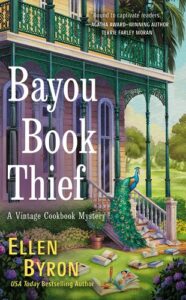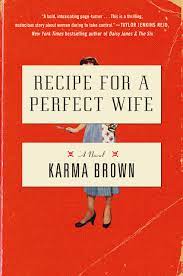When one of my writing pals sent me a link to a vintage Key West Woman’s Club cookbook published in the 1940’s, the plot for my 12th Key West mystery, A DISH TO DIE FOR, finally took off. First, a little background. Food critic Hayley Snow and her dog find a body on the beach about ten miles north of Key West. It’s a shock of course, and she’s still reeling from the emotional fallout of her discovery when she remembers she’s agreed to help sort donated cookbooks for the Friends of the Key West Library.
When I reached this point in the novel, I’d been talking with my writing friends about struggling with the plot. I loved the opening scenes, but how did this man’s body end up on the beach, and why? And how could I weave in the food angle that is expected with a foodie protagonist? Could something about the donated cookbooks contribute to a murder solution? Soon after our meeting, my friend Angelo sent this email, along with a photograph of the Key West Cookbook: I don’t know if this would be of any use to you, but I thought you’d find it interesting. I belong to the Historic Florida Page and this came up today. I wonder if they have a copy of the cookbook at your library? It was done by the Key West Woman’s Club. What’s cool is that the book was written out in longhand.
In real life, I arranged a tour of the real Key West Woman’s Club, a spectacular old building located in the middle of the downtown. I also found a copy of their old cookbook on Ebay and ordered it instantly. As I paged through the old-fashioned recipes and imagined the women who might have written them down, I determined that Hayley would discover a vintage copy of the first Key West Woman’s Club cookbook at the library. While helping set up for the murdered man’s memorial reception the next day, Hayley finds drafts of the original artwork buried deep in a cupboard at the Woman’s Club, and whispers of past crimes rise into the present. She becomes intrigued with the possibility that this bit of history might help her unravel the reason that the victim died on the beach.
But it turns out that I’m not the only fiction writer to find drama, magic, and murder in a cookbook. This roundup will highlight several cozy mysteries along with a few other novels that mine the pages of old cookbooks and recipes for plots and characters.

Mystery writer Ellen Byron collects vintage cookbooks, which is what inspired her latest series. She loves the way old recipes provide a window into both the culinary roots and sociology of the past. In Bayou Book Thief, she created an imaginary series as a huge plot point. Her protagonist, Ricki, stumbles upon a culinary romance series from the late 1950s-early 60s called the “Hungry for Love” romances, with titles like Romance on the Range and An Ocean of Desire, and “sexy” recipes that fit the title theme. The game is afoot when her protagonist finds a body in a box of vintage cookbooks.

In Simmering with Resentment, the 12th cookbook nook mystery by Daryl Wood Gerber, Bride’s Dream Expo is in town, including at the Cookbook Nook, where owner Jenna Hart is preparing for her own wedding in just a few short weeks. But there’s a dark cloud hanging over the festive mood—a woman Jenna helped convict of arson who is now out of jail and bent on revenge. And when Jenna and Rhett’s intimate prenuptial dinner is rocked by an explosion that nearly takes Rhett’s life, Jenna can’t help but think Sarita is to blame. Each book in the series features a theme week in Crystal Cove, and that theme carries over to the selection of cookbooks. In this installment, the cookbooks are all things wedding, with Jenna focusing in on cakes, meals for two for newlyweds, and simple recipes for the new bride.

In Kate Carlisle’s seventh bibliophile mystery series, A Cookbook Conspiracy, bookbinder Brooklyn Wainwright is asked to restore an old book as a gift for a controversial chef. The book turns out to be a handwritten cookbook dating back to Revolutionary War times, including journal entries by its author, Obedience Green. When the chef is found murdered at the end of his restaurant opening, the cookbook has disappeared, and Brooklyn’s sister becomes a strong suspect.

A vintage cookbook also steals the show in Recipe for a Perfect Wife by Karma Brown. Summarily dismissed from her career in publicity, Alice Hale follows her husband to a suburb of New York to become a writer. She discovers an old cookbook from the fifties in the basement of their old home, but soon learns that it harbors darker secrets than the recipes for fancy 1950’s dinners. Tension ratchets up as the present-day protagonist finds deadly parallels between her life and the notes left by the cookbook’s original owner.

In The Secret French Recipes of Sophie Valraux by Samantha Verant, the mysteries are not of the murderous kind, but instead the secrets of complicated families. Disgraced chef Sophie returns to her grandmother’s chateau in southern France after her grandmother suffers an aneurysm. She is pressed into service as the head chef, using the handwritten recipes from her grandmother’s collection to recreate what her relative would have served. She learns much more than she ever imagined about her grandmother’s life, her own mother’s tragic death, and herself as she cooks her way through these recipes.

Miss Cecily’s Recipes for Exceptional Ladies follows the developing friendship between an almost-forty-year-old woman with a lackluster boyfriend and job, and a 97-year-old woman waiting for her deliverance from a long life. The women slowly connect through their mutual love of food, and through the pages of a mysterious cookbook wedged on a shelf in Miss Cecily’s bedroom. The recipes in the book were written to suit to certain emotional times in the author’s life, and both characters learn from them. Who could resist wanting to know more about recipes titled “Dinner at Your Mother’s House After a Surprise Breakup on Holiday” or “Supper for a Friend Who Is Slimming”? (Trust me on this last—the author is not a fan of dieting.)
Old cookbooks turn out to be a perfect inspiration for fiction. I am now on alert for new ideas—consider the article sent by a friend from a cookbook published in 1926 by the Ways and Means Committee of the Ladies’ Benevolent Society of the Westville Congregational Church in Connecticut. The title of the piece? Recipe for Cooking Husbands.
***


















